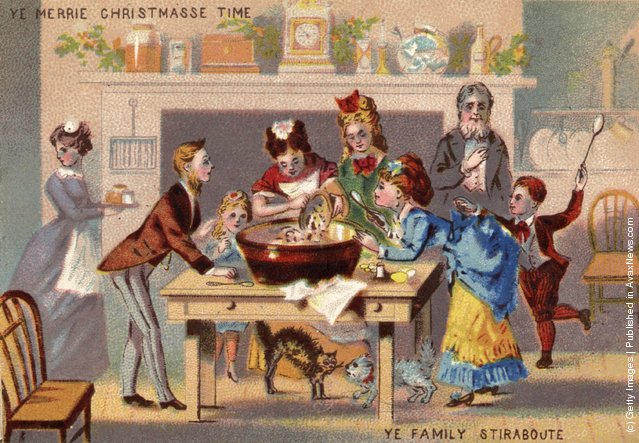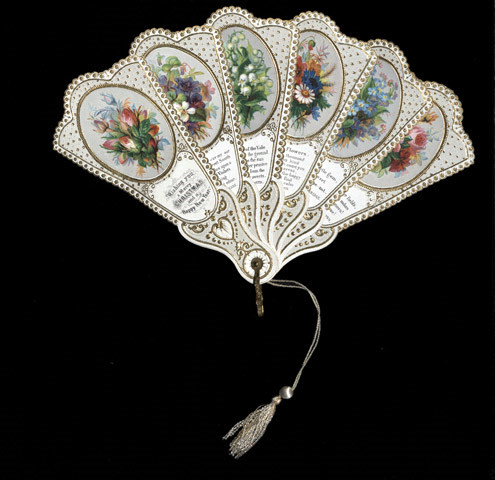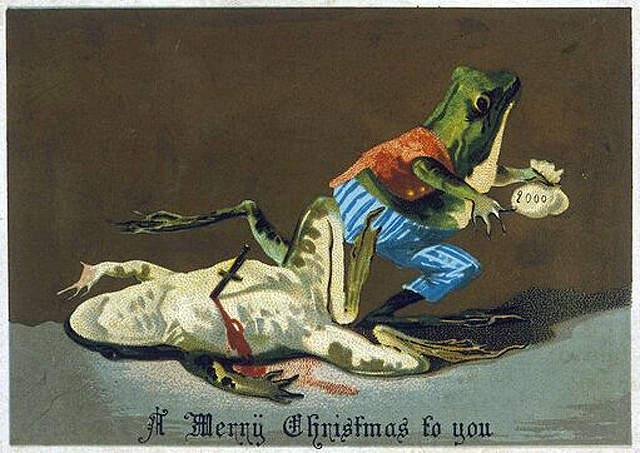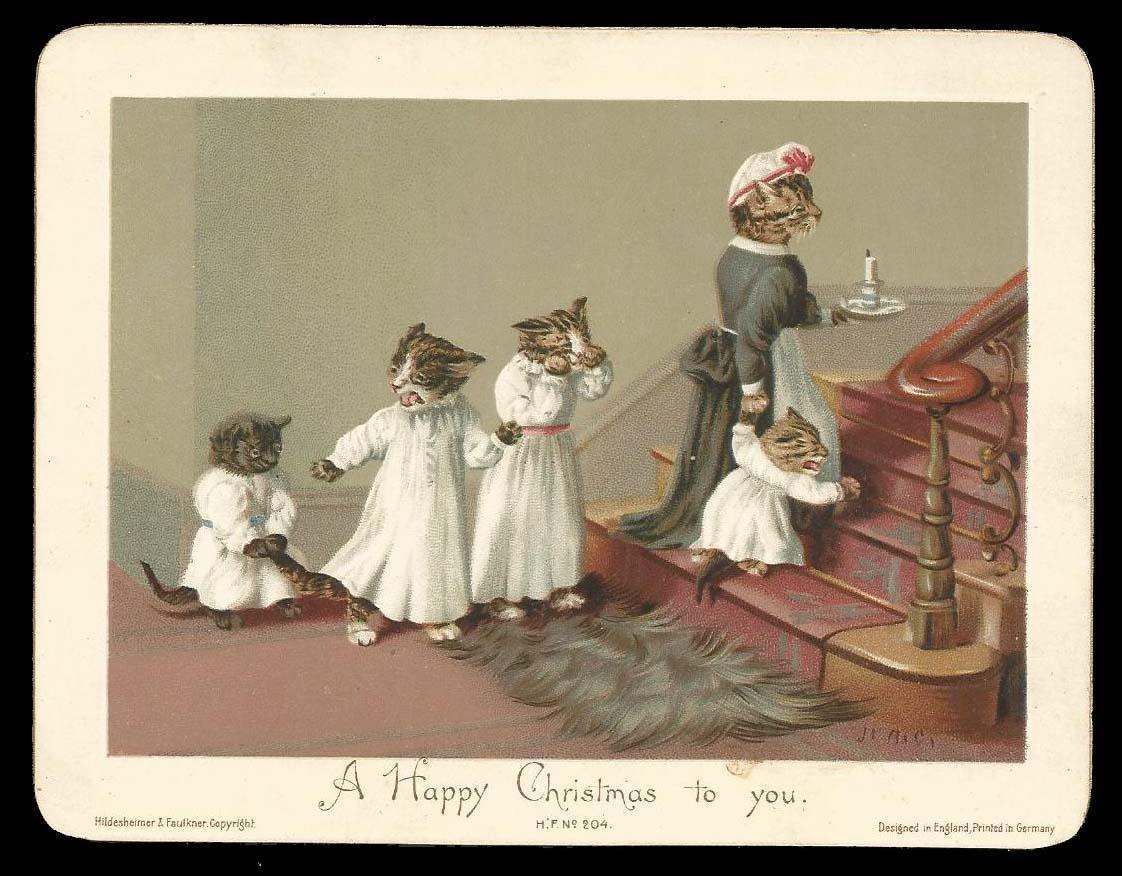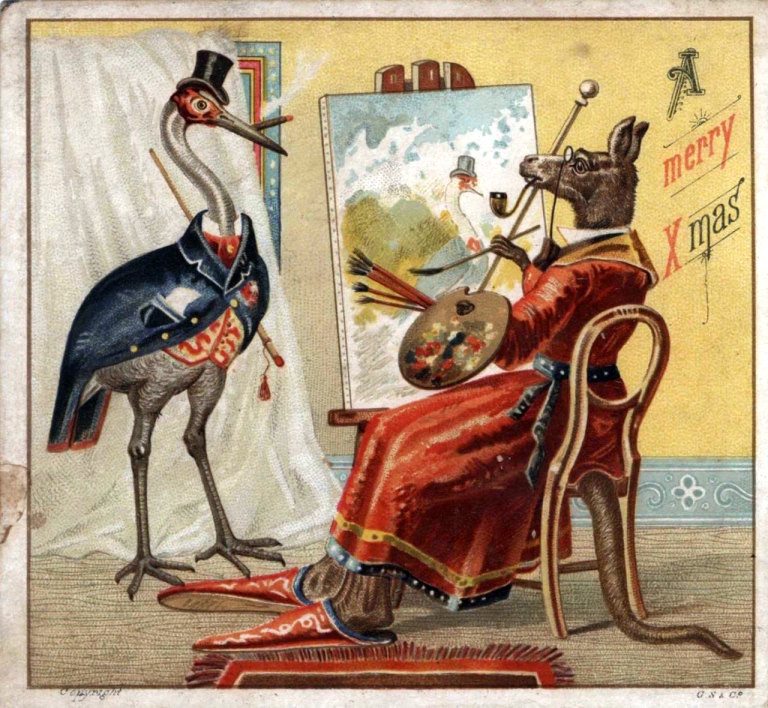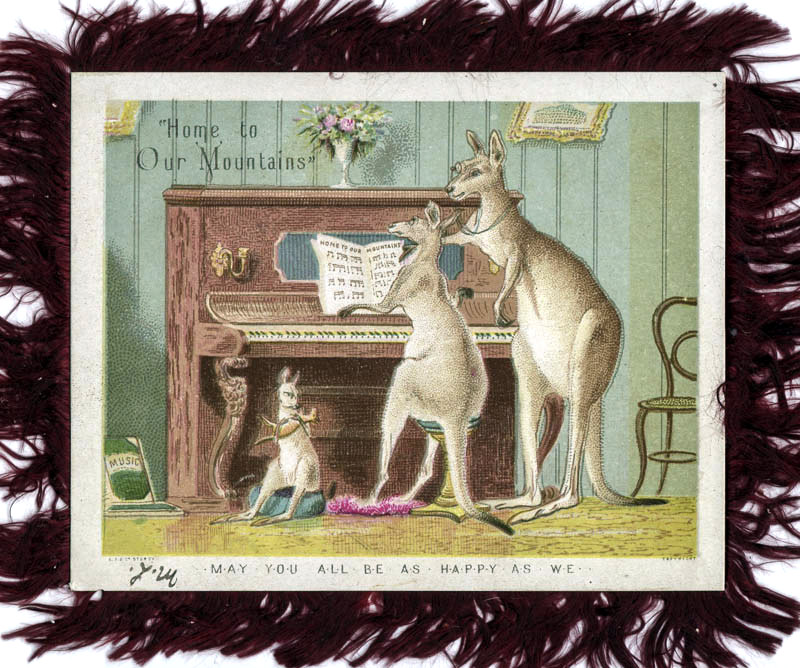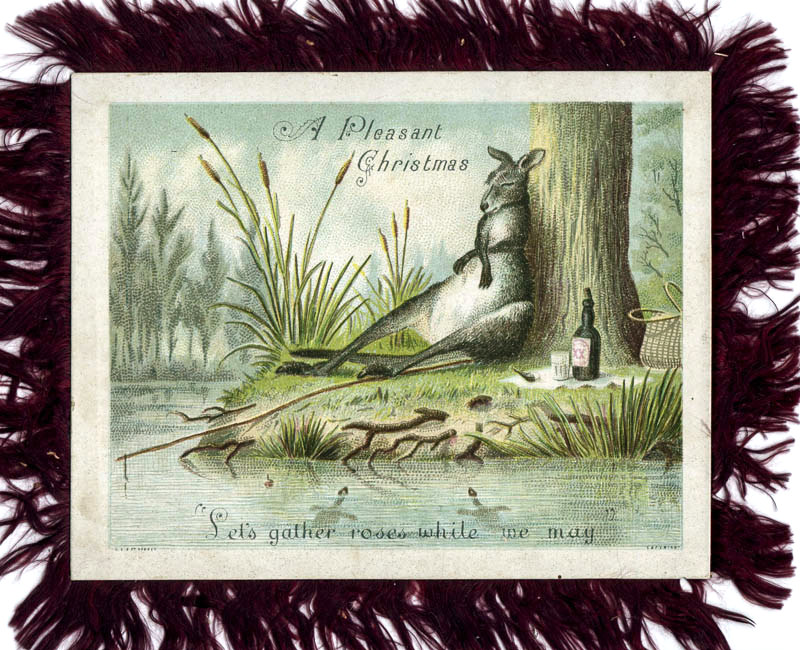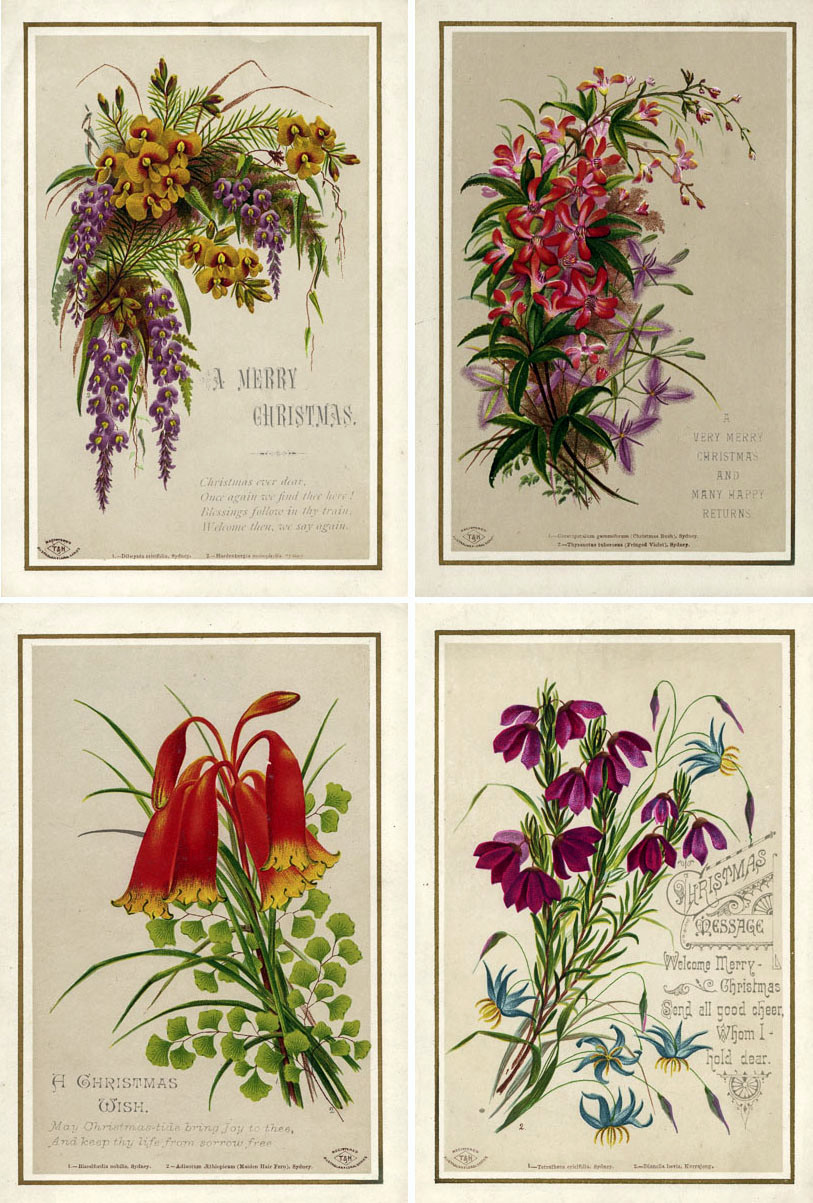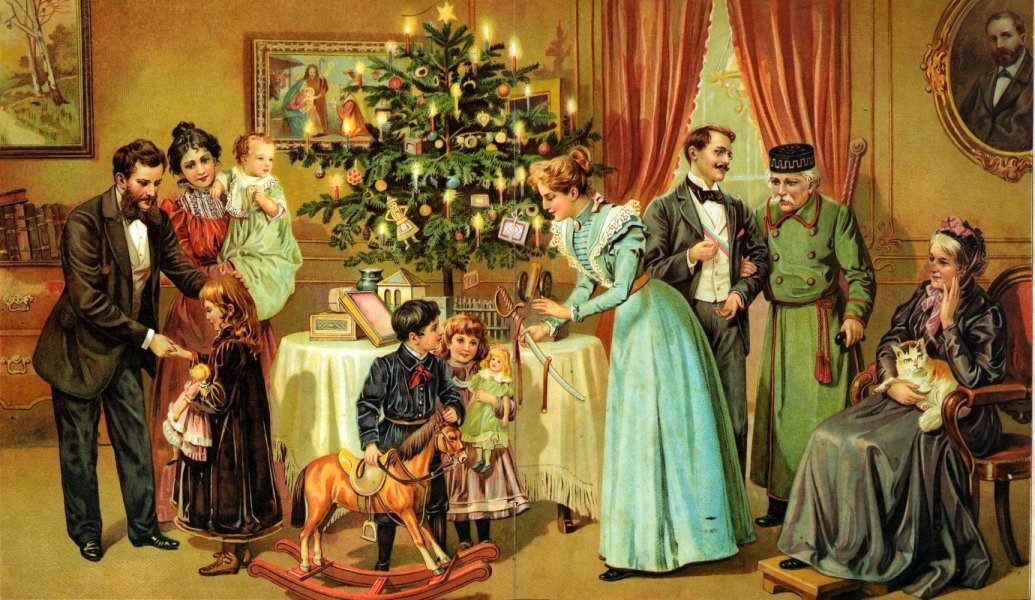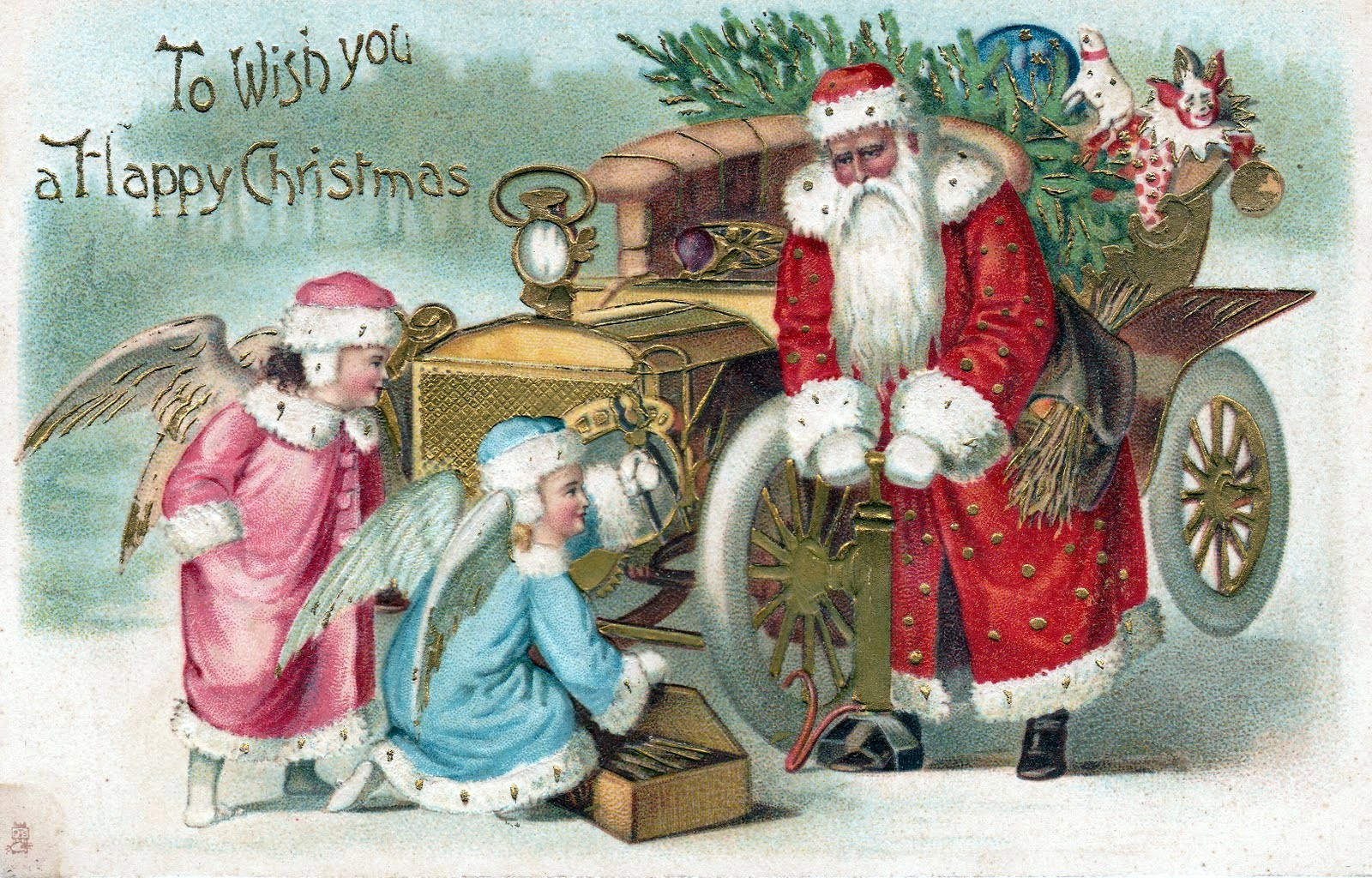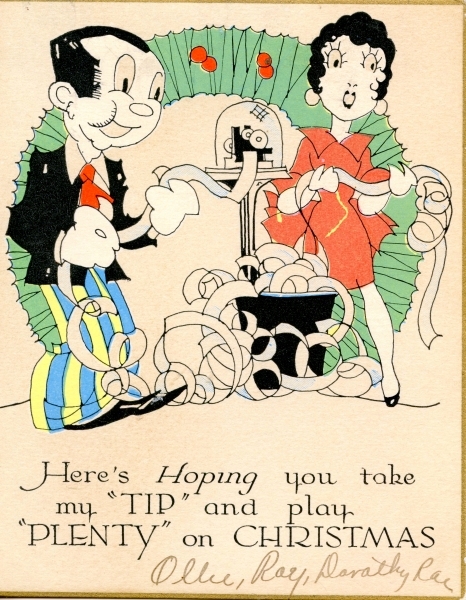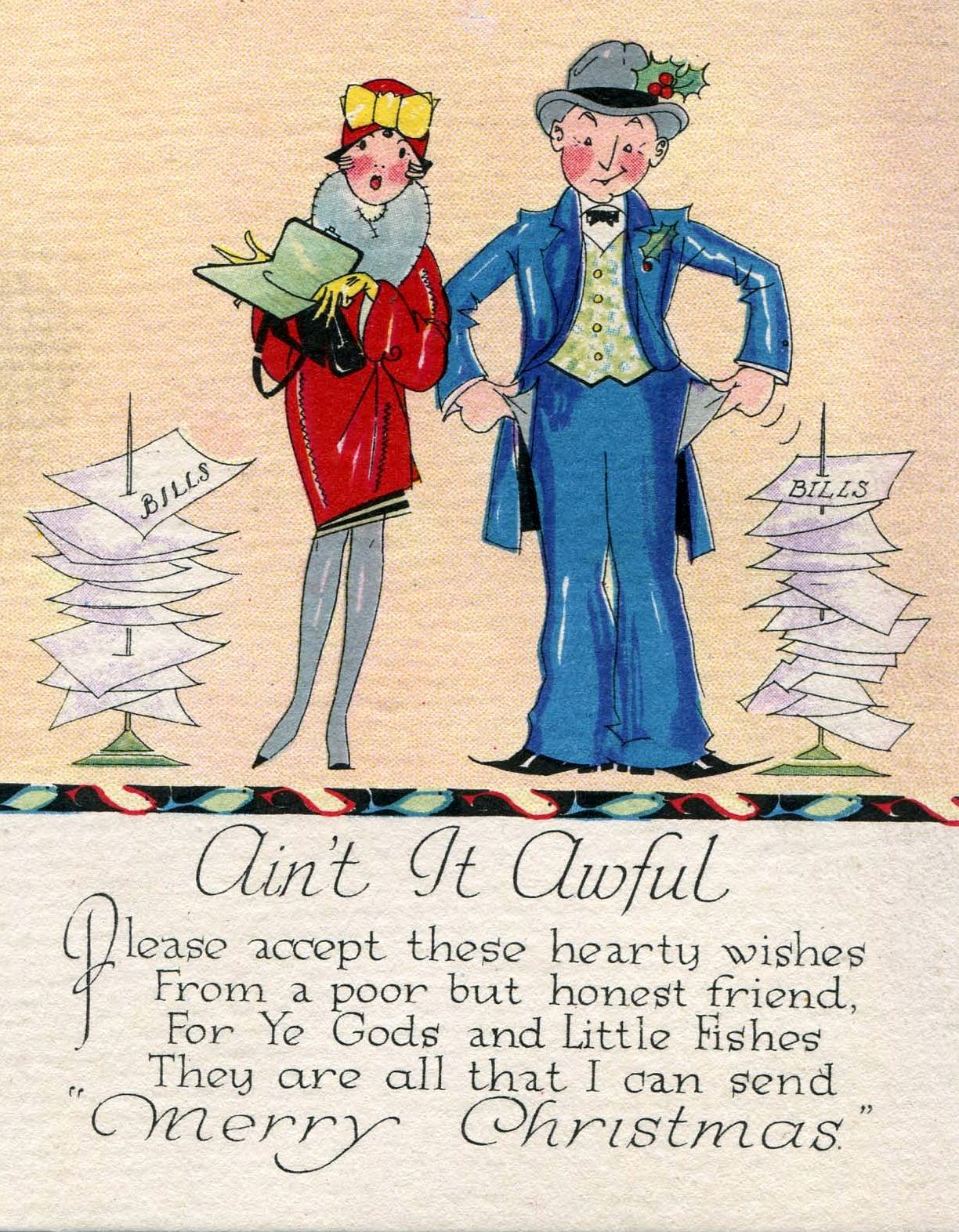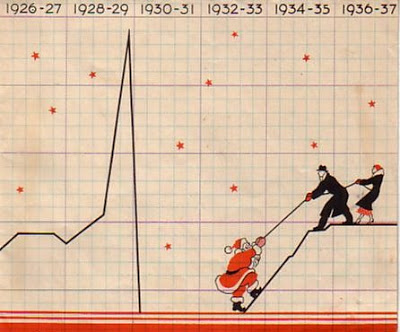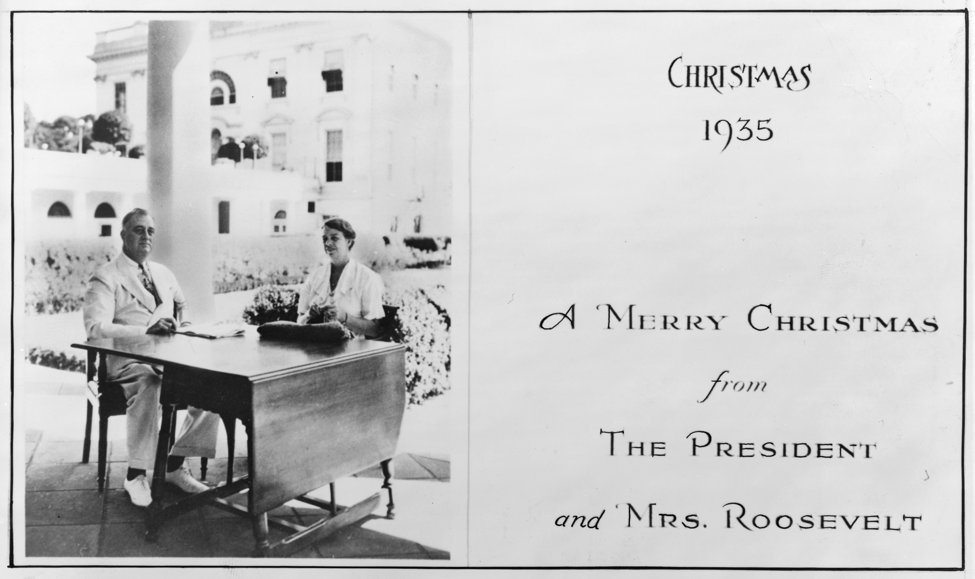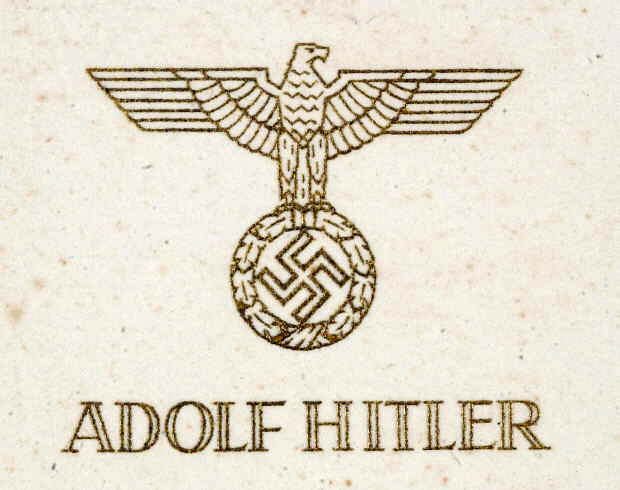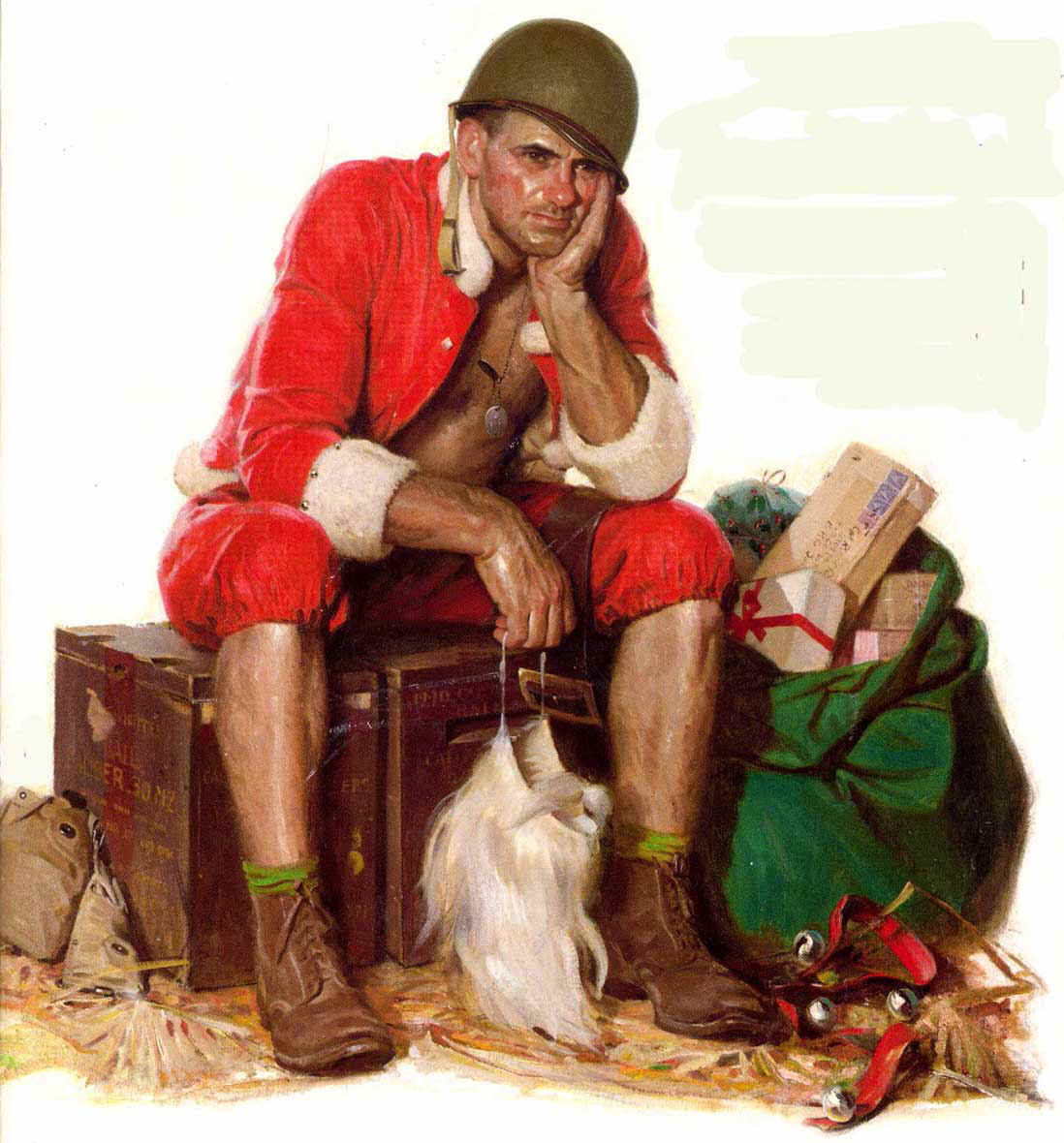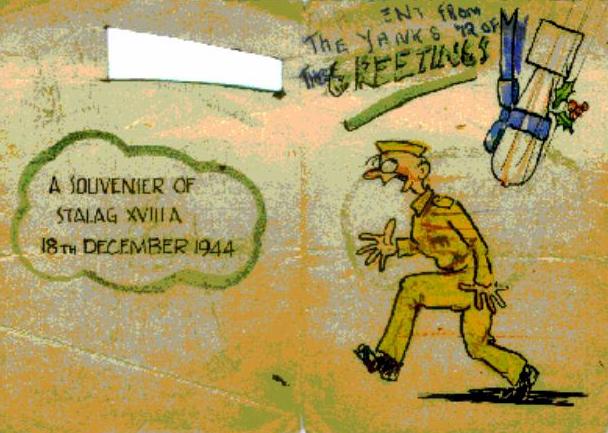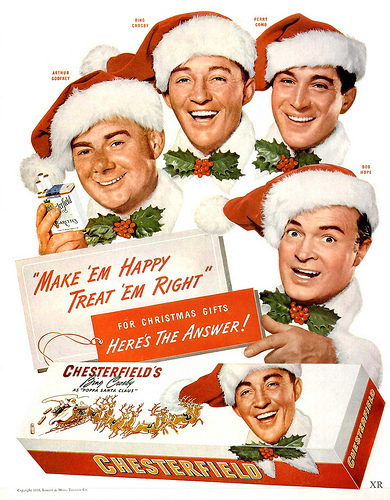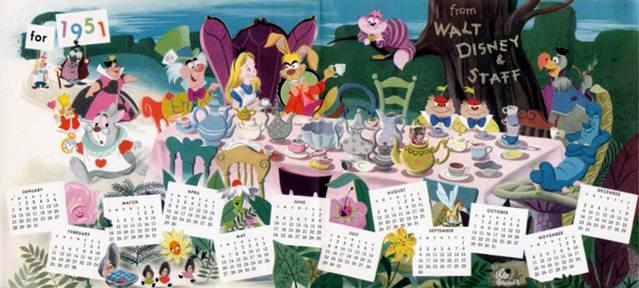The tradition of sending Christmas cards began in the early 1840’s in England. The “Penny Post” system was instituted in England in 1840 and sending letters to friends and family became cheap and popular- so popular in fact that during the Christmas season of 1843 a well liked fellow named Henry Cole was buried beneath a mountain of letters, all of which he was expected to answer. From a history of the Smithsonian:
Cole hit on an ingenious idea. He approached an artist friend, J.C. Horsley, and asked him to design an idea that Cole had sketched out in his mind. Cole then took Horsley’s illustration—a triptych showing a family at table celebrating the holiday flanked by images of people helping the poor—and had a thousand copies made by a London printer. The image was printed on a piece of stiff cardboard 5 1/8 x 3 1/4 inches in size. At the top of each was the salutation, “TO:_____” allowing Cole to personalize his responses, which included the generic greeting “A Merry Christmas and A Happy New Year To You.”
In the years following Cole’s card the tradition of sending of Christmas cards became firmly established in England. Many were very elaborate, like the fan above, and some were works of art. However the Victorian era had a dark side and its Christmas cards were often rather bizarre and eccentric.
The cards above are from about 1880. The dead bird was a constant motif of Victorian cards. Some say it was just a way to wish the recipient good luck:
Hunter Oatman-Stanford at Collectors Weekly noted that the birds are often robins and wrens, and that “killing a wren or robin was once a good-luck ritual performed in late December.” Specifically, the Irish St. Stephen’s Day on December 26 is known as “Wren Day,” with a traditional hunt of the bird (albeit now a fake one on a pole, although that wasn’t always the case). So receiving a card with the little prone bird, feet curled in rigor mortis, could be meant to wish nothing more than good cheer on the new year.
That certainly seems a stretch and how to explain the frog absconding with 2000 pounds after stabbing his unlucky victim? It is hard to find an uplifting message of any sort in the image of a recently murdered frog.
Other Victorian Christmas cards were just strange, like this one from 1889, and some were downright creepy but these sorts of Christmas cards were peculiar to Victorian England.
Australian cards of the 1880’s were usually cheerful and lighthearted, and most featured the lovable kangaroo or…
After the Victorian age, Christmas cards returned to a more traditional style like this 1905 card from Zurich depicting an extended family gathering.
By 1910 Santa had ditched his sleigh and put the reindeer out to pasture.
During the First World War Christmas cards had a decidedly martial theme. In this 1915 card the 1st Grenadier Division sends greetings “with love” wishing a pleasant Christmas. This appears to be a direct order as the recipient is looking down the barrel of a Grenadier’s rifle.
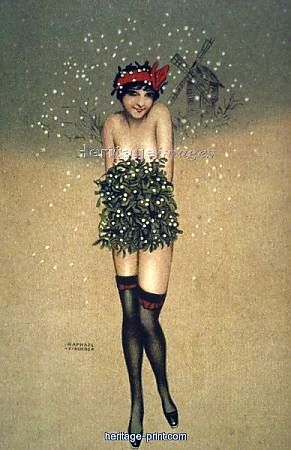
Erotic Christmas card, purchased for the High Commissioner in Cairo during WWI as an example of the ‘vice’ prevalent amongst troops” stationed in Egypt.
Another theme of war cards was, not surprisingly, beautiful and provocative women and in the case of the young lady in the black stockings “an example of the ‘vice’ prevalent amongst troops” stationed in Egypt.” This verdict was delivered by the British Egyptian High Command which was scandalized by the erotic material which the troops were purchasing in the bazaars and souks of Cairo. In the British Army the reign of Victoria had not yet ended.
After the war came the roaring 20’s and skyrocketing stock market. Everyone with a few bucks or good credit was looking for tips on the next hot stock. They were happy to play the market because only a sucker would pass up the chance to become a millionaire.
Prisoners of war from both sides were allowed to send Christmas cards although it is unlikely the one above got by the censors. The GI’s responsible for this card, dated December 18th, 1944 were certainly unaware that two days earlier the German Army had mounted a massive offensive in France which became known as the Battle of the Bulge.
During the war millions of Americans acquired the smoking habit and by the 1950’s the perfect Christmas present was a carton of Chesterfields. All the most famous people smoked Chesterfields which made it the perfect gift.


